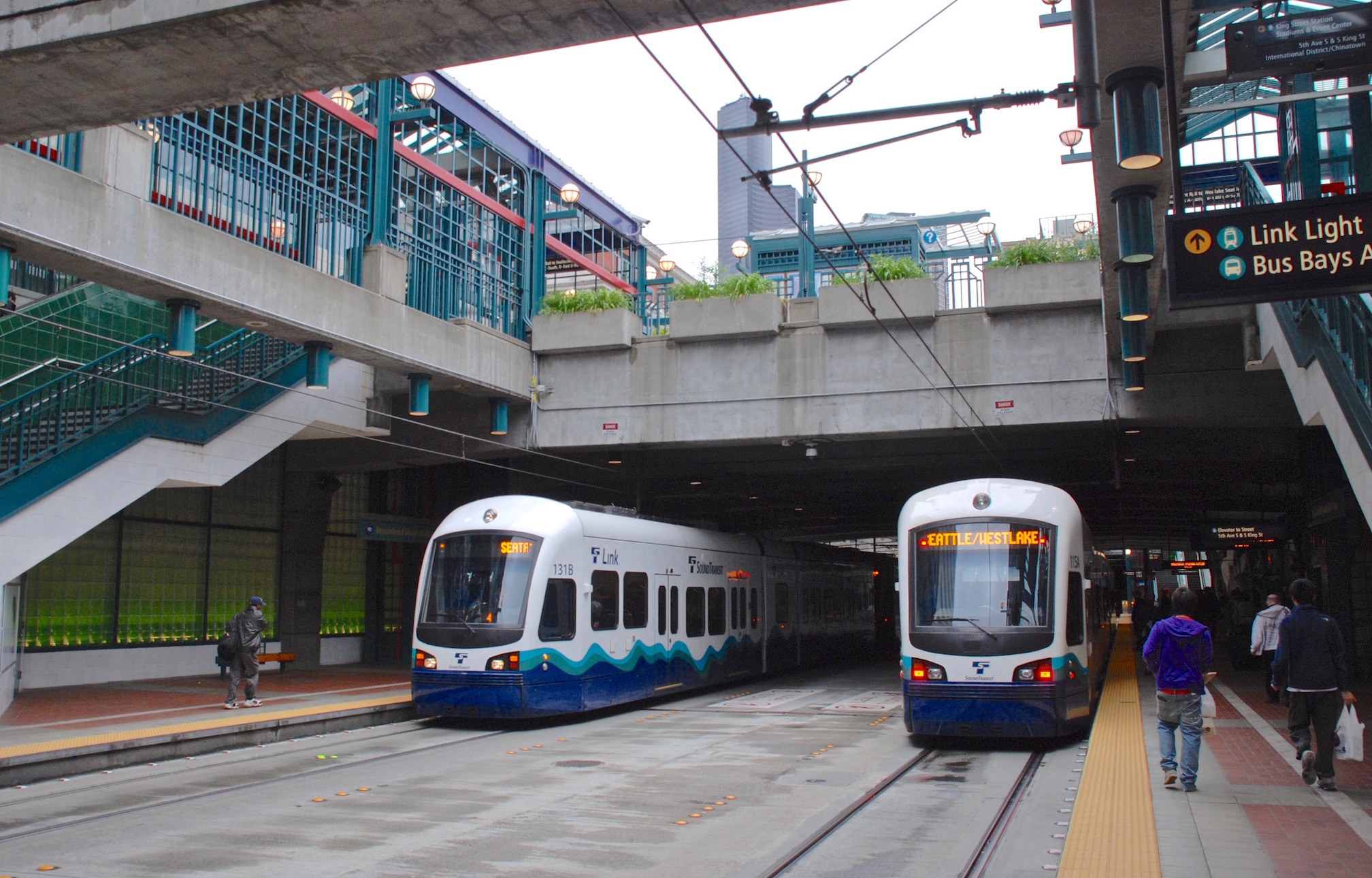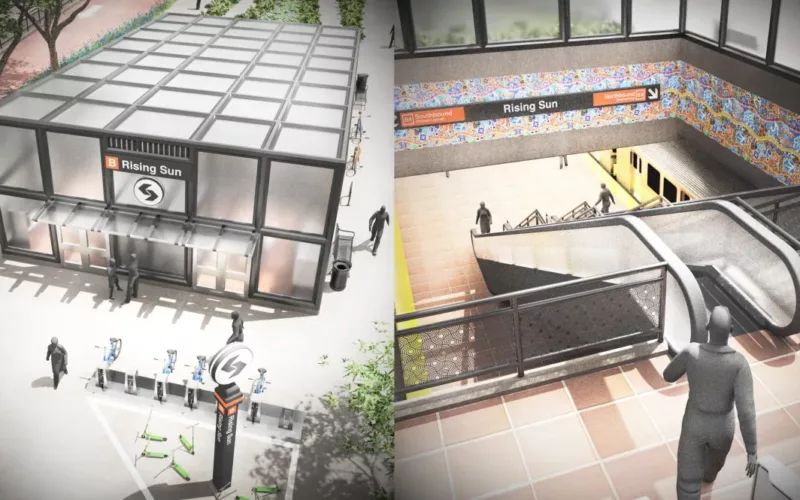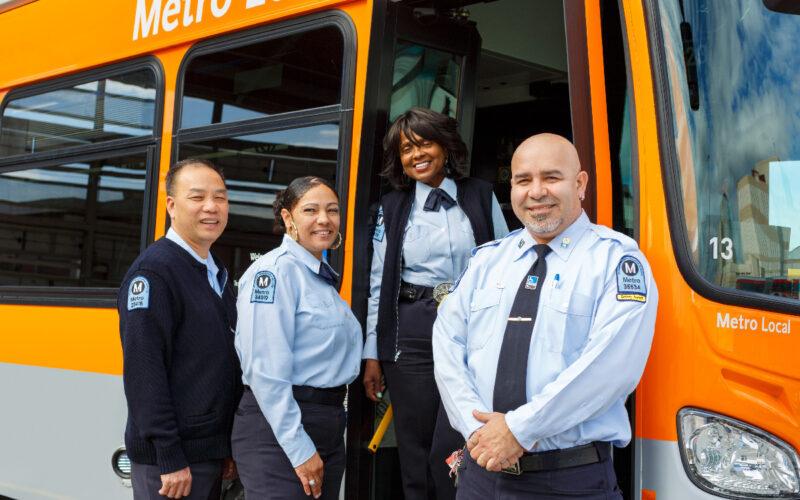
Seattle's Link light rail expansions have brought high-capacity transit to areas of the city where travel demand is very high. Photo: Steve Morgan/Wikimedia Commons
The Federal Transit Administration’s Capital Investment Grant program (CIG) is a major source of funding for transit expansions and upgrades in American cities, with the Biden Administration budgeting $2.5 billion for these grants in Fiscal Year 2022. The grant criteria strongly influence the pipeline of these projects at agencies across the nation. FTA recently requested feedback on the CIG program criteria. Below is the overview of TransitCenter’s response.
TransitCenter is a national foundation whose mission is to improve transit in order to make cities more just and environmentally sustainable. Our overall recommendation for the CIG program is to direct more resources to transit capital investments that:
- Improve speed, reliability, accessibility, frequency, and/or span for heavily-used transit corridors.
- Significantly expand access to jobs, schools, stores, medical facilities, and other recurrent destinations, especially for people with low incomes and people of color.
- Achieve network effects through upgrades that improve linked trips, or through additional service changes planned in tandem with the primary project.
- Have alignments with stations and stops in places people can easily and safely access via walking, biking, or wheelchair.
We’re grateful for the opportunity to comment on the CIG program criteria because the track record for major transit investment in the U.S. is mixed. Reviewing recent patterns of capital investment, there are too few transit projects that meet a significant demand for travel, expand access, yield network benefits, or serve walkable areas.
The downtown mixed-traffic streetcars built in the last 12 years, for instance, tend to be too short, slow, or unreliable to provide significant gains in access or mobility, even though they are sited in dense areas. Conversely, when projects are designed with dedicated rights-of-way that do enable fast, reliable travel, they are often aligned on highways or abandoned freight lines that fail to connect places where many people live to major job centers or other clusters of activity.
So while dozens of streetcars have been added in downtowns with little ridership benefit, the transit networks in most American cities have stagnated or worse, through the gradual attrition of bus service. And even much-heralded transit expansion initiatives, like Denver’s FasTracks, have not met expectations for increased access, ridership, and network benefits, because the model of using easily available rights-of-way extending deep into low-density suburbs does not align with the demand for transit in the urban core and among residents with lower incomes.
These patterns of transit investment do not advance social equity or prevent climate change. Though the choices are often justified by claims of economic development or congestion relief, they do not generate the broad economic benefits or travel time savings that accrue when capital projects are grounded in the fundamental objective of improving travel by transit for large numbers of people.
We can also point to high-value projects that do achieve these goals (or will achieve them, when they are built):
- With the expansion of Link light rail in Seattle, Sound Transit and King County Metro have connected compact residential areas to major employment centers and clusters of activity, all while making complementary adjustments to bus routes that compound the network effects.
- In Chicago, CTA’s Red and Purple Line modernization will improve speed, reliability, accessibility, and capacity on a major transit corridor — and by eliminating bottlenecks, it will confer benefits throughout the L network.
- The GRTC’s Pulse BRT in Richmond, Virginia, upgraded capacity, speed, and reliability on the network’s trunk line, in tandem with a redesign of other bus routes that further expanded access to frequent service.
- The unbuilt Red Line in Baltimore, cancelled by Maryland Governor Larry Hogan, would have connected Black neighborhoods on the city’s west side to major employment centers.
In general, FTA should adjust the CIG criteria to funnel more resources to projects like these upgrades, and less to projects like mixed-traffic streetcars or suburban rail expansions.
Read TransitCenter’s full submission to FTA, which highlights policy recommendations from NACTO, NRDC, and APTA that our organization endorses.
 To Achieve Justice and Climate Outcomes, Fund These Transit Capital Projects
To Achieve Justice and Climate Outcomes, Fund These Transit Capital Projects
Transit advocates, organizers, and riders are calling on local and state agencies along with the USDOT to advance projects designed to improve the mobility of Black and Brown individuals at a time when there is unprecedented funding and an equitable framework to transform transportation infrastructure, support the climate, and right historic injustices.
Read More New Drug Testing Rule from USDOT Could Help Alleviate the Bus Operator Crisis
New Drug Testing Rule from USDOT Could Help Alleviate the Bus Operator Crisis
New drug testing rules from the USDOT could make it easier for transit agencies to recruit more operators - but only if they implement the rule.
Read More